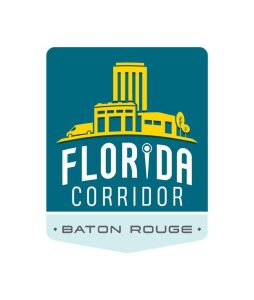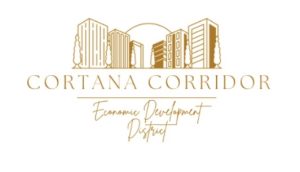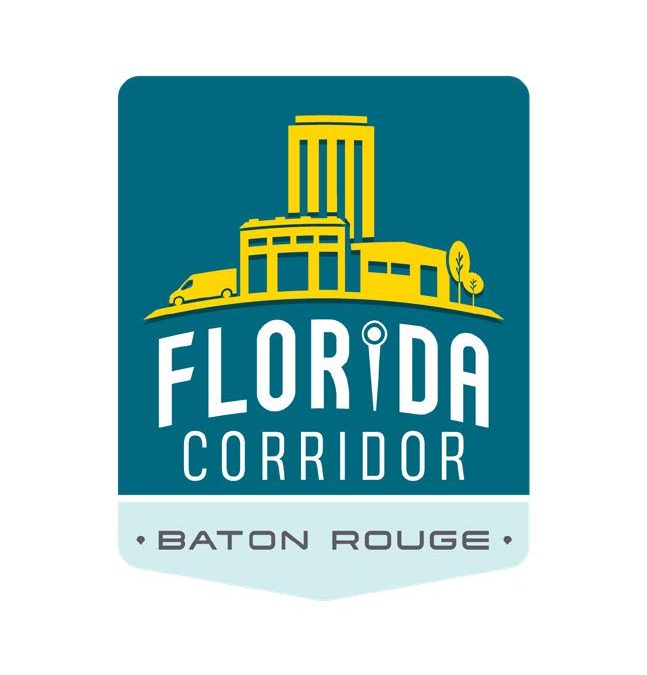
BATON ROUGE METRO COUNCIL APPROVES FLORIDA CORRIDOR PLAN
Catalyst for equitable neighborhood development, reinvigorating & reconnecting a 12-mile stretch of the city
BATON ROUGE, LA—September 30, 2024 – The East Baton Rouge Metropolitan Council unanimously approved the Florida Corridor Plan, a multi-year project to attract investment and the 12-mile stretch from the Mississippi River in Downtown Baton Rouge to the Livingston Parish line. The Plan provides a roadmap for equitable neighborhood development and new investments in infrastructure, green space, and housing along the entire corridor with a specific focus on six neighborhood centers that are vital to the resilience and vibrancy of the region.
The planning initiative is part of a larger effort involving the City-Parish, Build Baton Rouge, and the Cortana Corridor Economic Development District (CCEDD). Historically, the Florida Corridor served as a significant commercial corridor and commuter route linking over 85,000 residents across 17 neighborhoods. However, it has also been a symbol of racial and economic division, separating less affluent Black neighborhoods to the north from more prosperous White neighborhoods to the south.
The Plan addresses decades of economic decline as well as recent challenges such as changing retail patterns and auto-centric development, which have further contributed to the corridor’s decline. The CCEDD, managed by Build Baton Rouge, seeks to reverse this trend by leveraging investments around the recently completed Amazon Fulfillment Center at the former Cortana Mall site to revitalize the corridor. The Plan is being funded through a tax increment financing district established in 2021 around the Amazon site.
According to Mayor-President Sharon Weston Broome, “The Florida Corridor Plan embodies my administration’s focus on improving the quality of life for citizens while building resiliency through infrastructure improvements. The plan’s framework encompasses key elements of my vision to grow East Baton Rouge Parish via economic development, infrastructure investment, strengthening quality of life, and prioritizing quality of place.”
Approval of the Plan follows an inclusive, year-long planning process that involved extensive stakeholder engagement with over 4,000 participants through a variety of outreach methods and events at locations throughout the Florida Corridor. An Advisory Committee composed of governmental agencies, civic associations, and community stakeholders guided the project, ensuring that diverse perspectives and representative leadership voices were integrated into the revitalization efforts. An overarching project vision, goals, opportunities, and needs were established through ongoing collaborative engagement with corridor communities.
Distinct priorities were defined for each of the six neighborhood centers: I-110 Stitch, Mid City, Foster & Florida, Bon Carre, Cortana and Sherwood. The Plan is meant to guide future economic development projects and address issues such as transportation, land use, affordable housing, and retail. The Plan capitalizes on existing transportation infrastructure planning and investment – including the city’s
MOVEBR transportation infrastructure plan – to balance vehicular traffic demands with pedestrian safety and public transport improvements.
The Plan’s lead planning and urban designer is Perkins&Will, the global design firm that has worked on other Baton Rouge projects including the Water Institute of the Gulf’s Center for Coastal and Deltaic Studies, LSU’s Patrick F. Taylor Hall, the Baton Rouge Health District, and the campus of Our Lady of the Lake Children’s Hospital.
“The future of Baton Rouge depends upon a vibrant and thriving Florida Corridor for residents, business owners, and visitors. This plan is a focused first step to guide positive change and growth for the decades to come,” said Andrew Broderick, an urban designer and project manager with Perkins&Will.
Also integral to the planning team was Baton Rouge-based engagement and management consultant Franklin Associates, which led the community engagement process and communications for the project. Franklin collected and analyzed stakeholder input, provided cultural insights, and assisted with navigating key relationships with institutions, local leaders and residents.
As founder and president, Perry Franklin said throughout the process: “We need to make the Florida Corridor a uniting line instead of a dividing line across our community.”
https://www.floridacorridorbr.com/

About Build Baton Rouge:
Build Baton Rouge was created as The East Baton Rouge Redevelopment Authority by the 2007 Louisiana Legislature and began operations in 2009. It is governed by a five-member Board of Directors and its jurisdiction includes the entirety of East Baton Rouge Parish. Board members are appointed by the City of Baton Rouge/East Baton Rouge Parish Mayor-President, the Baton Rouge Area Foundation, and the Baton Rouge Area Chamber. The Authority was created to “formulate a workable program or programs for using appropriate private and public resources to eliminate and prevent the development or spread of slums and blight, to encourage needed rehabilitation, and to provide for the redevelopment of slum or blighted areas, or to undertake other feasible parochial activities as may be suitably employed to achieve the objectives of such workable program.”

About Cortana Economic Development District:
The Cortana Corridor Economic Development District (CCEDD) is administered by Build Baton Rouge and is governed by a five-member board of directors. The District was created to leverage investments surrounding the Amazon Fulfillment Center and to provide projects that enhance the district for the surrounding communities and to attract and retain jobs. The Florida Corridor Plan is the Cortana Corridor Economic District’s first priority project since its formation.
About the Consultant Team:
The consultant team was led by Perkins & Will, a global design firm, and supported by HR&A Advisors for real estate analysis, finance analysis and economic development advising and implementation strategy. Nelson Nygaard (NN) a subsidiary of Perkins & Will, provided mobility and transportation planning strategy. Franklin Associates provided community outreach and engagement consultant. Forte & Tablada provided civil and traffic engineer, bringing relevant experiences and coordinating with their efforts on MOVEBR.
Media Contact Johnathan S. Hill Franklin Associates 225-283-4814

